

© Alexandria Rae Cubbage, 17th July 2020
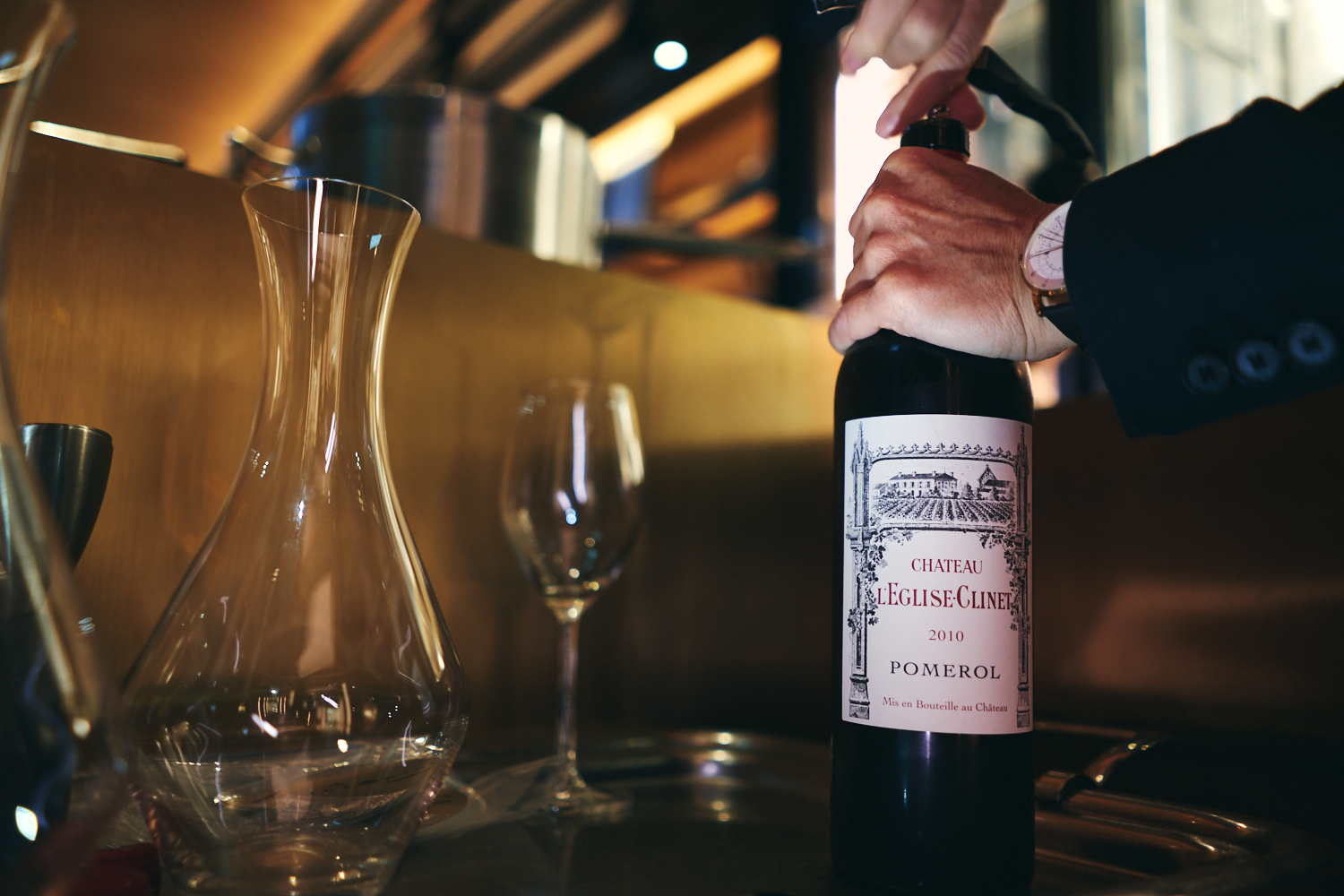
Last Thursday, eleven of you joined me in the private room at La Rambla to taste and to discover the wines of Château L’Eglise-Clinet, a small estate located in Pomerol on the Right Bank of Bordeaux. Critics and wine lovers started to take notice of this estate with the release of the 1998 vintage, placing it up right alongside the elites of Pomerol such as Pétrus and Lafleur. The wine community watched and tasted as vintage after vintage continued to be a success. And by 2005, Robert Parker awarded L’Eglise-Clinet his highly coveted 100 points.
The person credited with elevating L’Eglise-Clinet to the forefront of wine connoisseurs’ most sought after wines is Denis Durantou. His ancestors founded L’Eglise-Clinet in 1882, and he returned to manage with his first vintage being the 1983. Sadly, Denis passed away in May. A great hole has been left in Bordeaux with Denis’ passing as he was truly one of the best vignerons of his time described as a humble gentleman and always out in his vines.
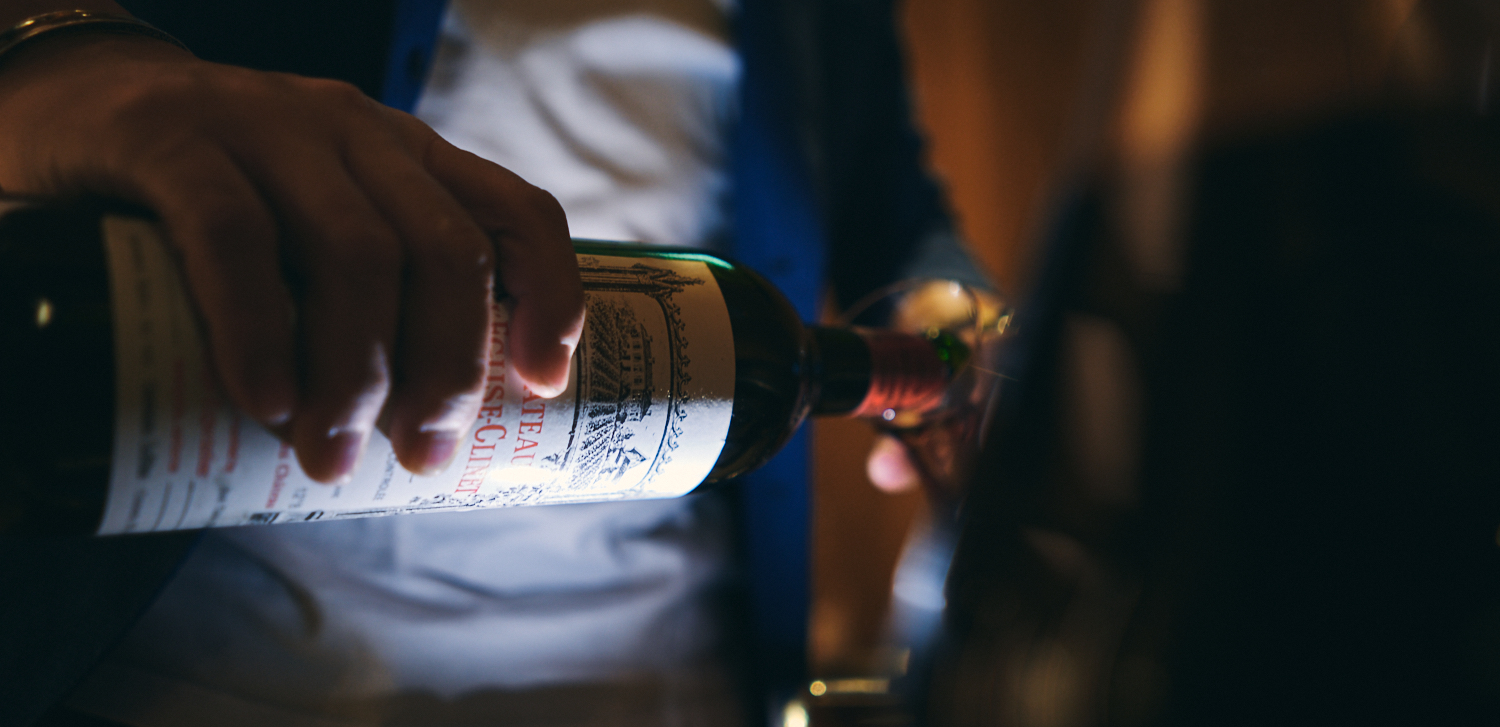
This dinner offered us the opportunity to see the evolution of L’Eglise-Clinet under the direction of one of Bordeaux’s most passionate and talented winemakers. We tasted a range of vintages spanning from 1967 to 2010. Below are my impressions of the wines as well as notes on the food pairings. At the end of the evening, I asked everyone to vote for their two favourite wines of the night, and those results are included here too.
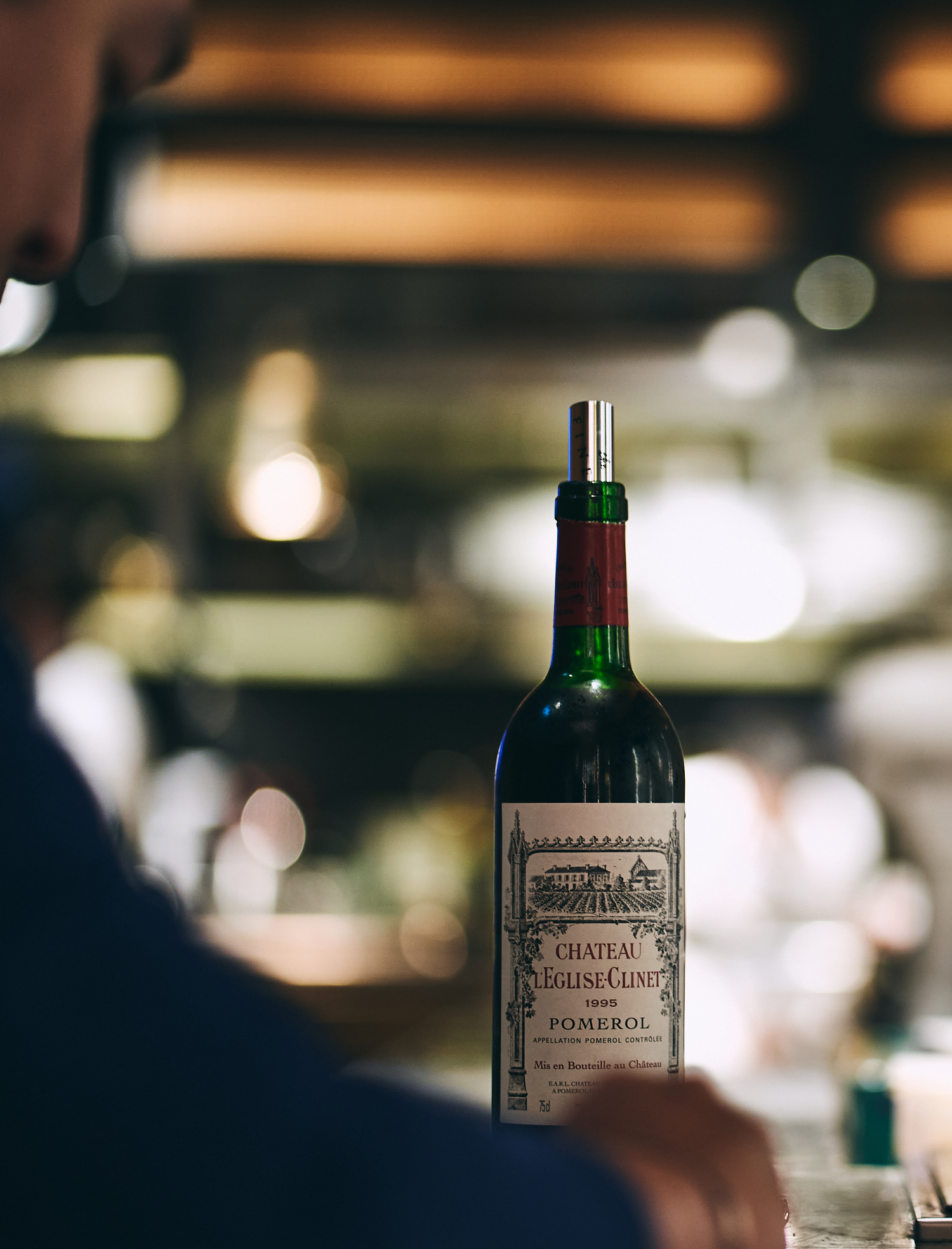
With this flight, we were able to taste one wine (1967) made by the winemaker who preceded Denis Durantou, Pierre Lasserre. The 1967 vintage was challenging in Bordeaux; many had to chaptalize because of low sugar levels, the grapes didn’t ripen enough. However, Pomerol faired the best and 1967 from this appellation can offer happy surprises. In this flight, we were also able to taste the first vintage where Denis felt he was making great wine which was 1985.1 By this time, Denis felt the improvements he’d put in place with the new cellar and equipment, younger vines and his own confidence from having more experience could be felt in the wine. The 1995 was included in this flight because of the nature of the vintage; we felt it would flow best with these wines.
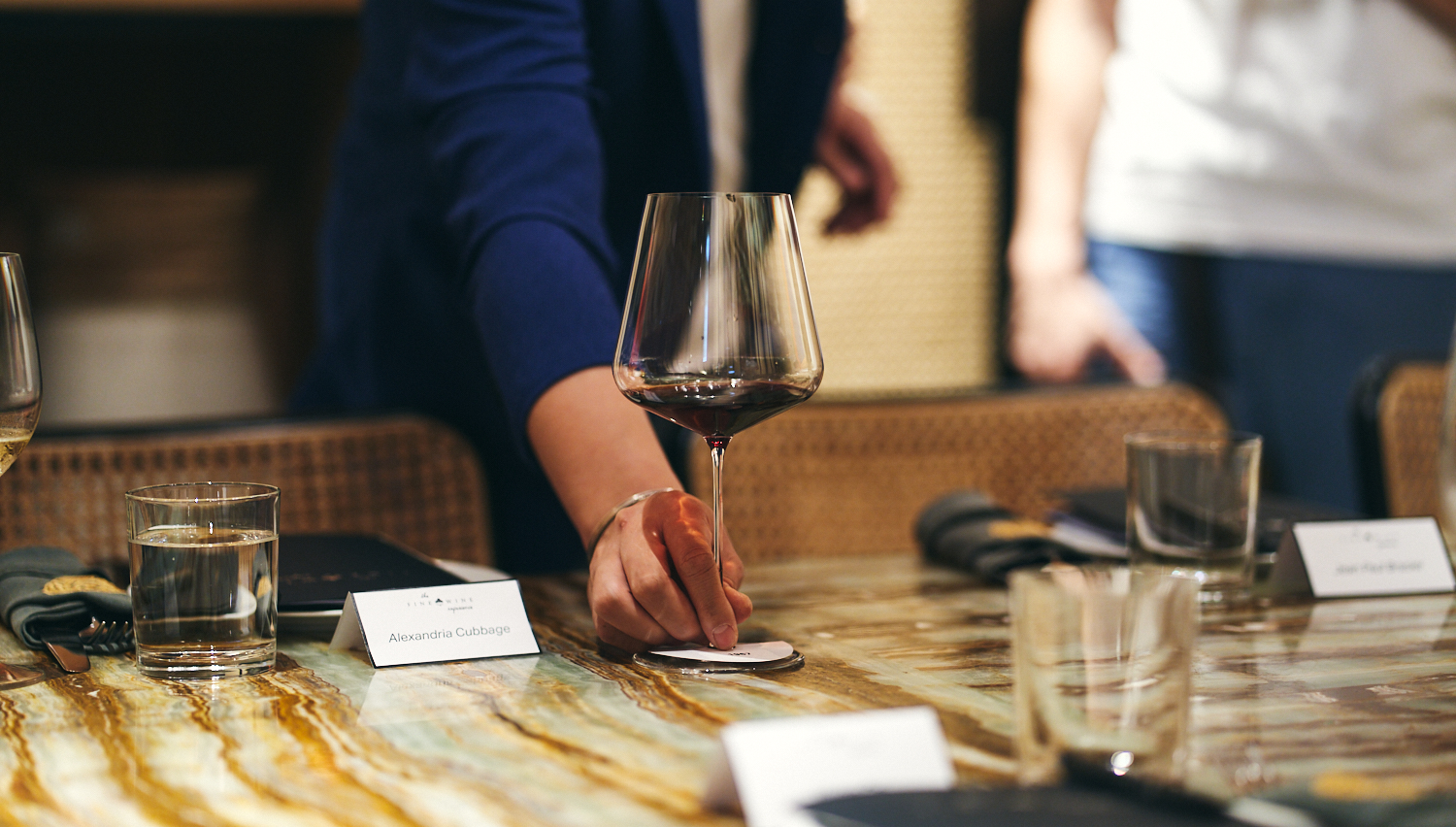
1967 Château L’Eglise-Clinet
Aromas of chestnuts, damp autumn leaves, fresh and dried fruit flavours comprised of cassis, blackberry and dark raspberry revealed themselves in the glass. The tannins were present but integrated providing pleasing structure to the fruit and aided in delivering a long finish. This wine was served alongside 1985 and 1995 and was paired with Monkfish Suquet, a traditional fisherman stew, with potato terrine. The 1967 was my favourite pairing with the dish (some others preferred the 1985) as the Ñora pepper paste (a round red pepper native to Spain and commonly used in paella as well as many other Spanish dishes) that was the base of the sauce served with the monkfish worked in tandem with the flavours of the wine accentuating its developed and earthy character. The Ñora pepper is in the bell pepper family, and on its own has a sweet fruity and earthy taste; it’s the base for paprika.
5 votes for wine of the night, 2nd= place.
1985 Château L’Eglise-Clinet
More intensity on the nose in this glass with flavours of dried roses, sweet tobacco, and red berry notes dominating the fruit aromas which also included dark raspberry. The tannins were firm but fine-grained and carried through to a lasting finish.
2 votes for wine of the night.
1995 Château L’Eglise-Clinet
This wine was tired and showing quite developed notes. The fruit was primarily dried and pruney in character; this bottle was not a good showing of the wine.
No votes for wine of the night.
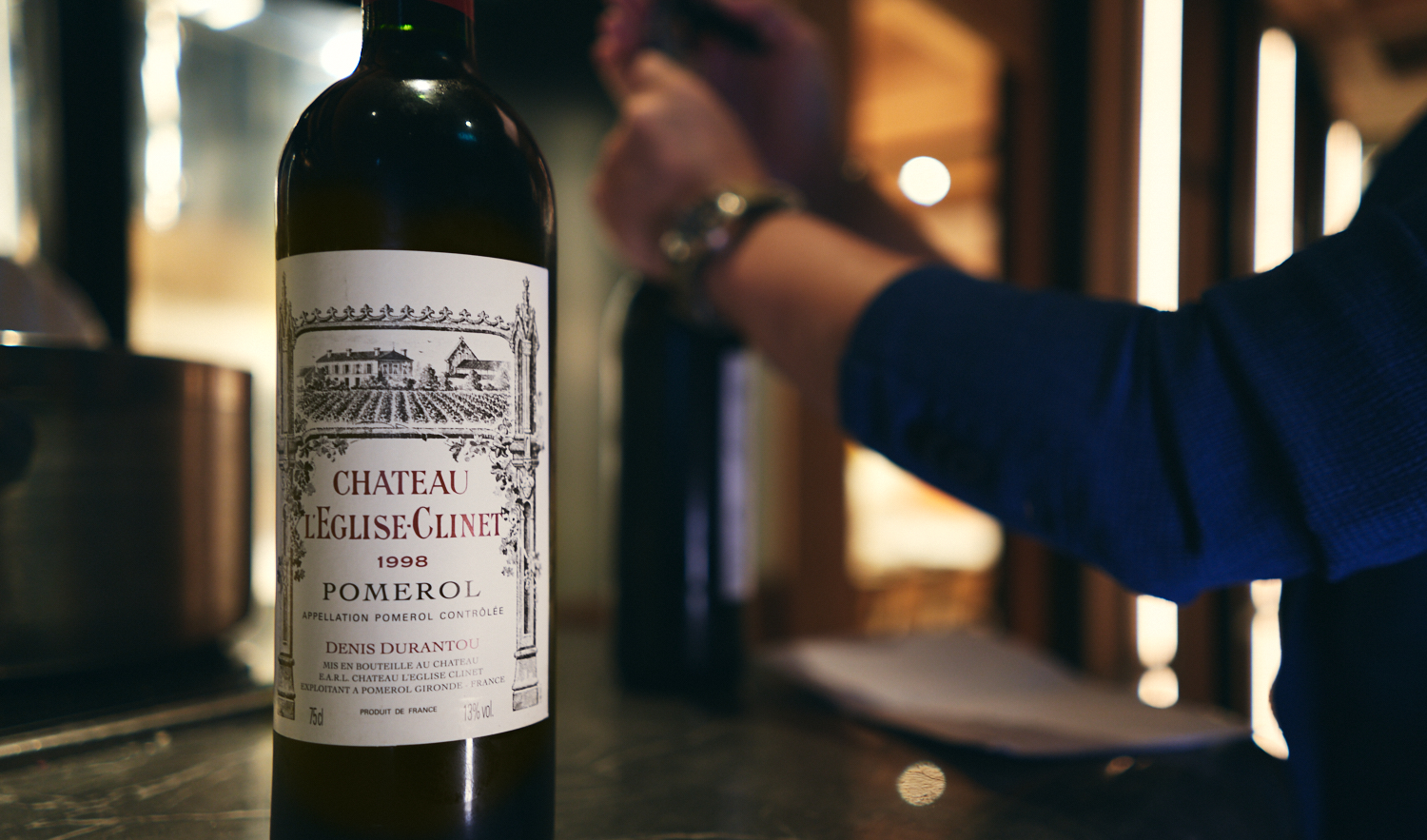
The idea with this flight was to put together two classic Bordeaux style vintages for the Pomerol, 1996 and 2004, which offer more of the lively expression and lightness capable from L’Eglise-Clinet juxtaposed against the intensity and power of the 1998, one of the great vintages for this estate.
1996 Château L’Eglise-Clinet
In this glass, aromas of lead pencil, old leather, dark cherry and cassis combined with a structured backbone and vibrant acidity melded together. Denis Durantou said of this vintage that he may have over-cropped, so he had to bleed the tanks.
No votes for wine of the night.
1998 Château L’Eglise-Clinet
This wine showed sweet, dark berry aromas, both fresh and dried, combined with floral notes and aromas of black truffle as well as minerality. The fruit was pure in expression conveying both intensity and concentration on the palate. It was powerful with firmer tannins than the 1996 and 2004, yet well balanced. In terms of the food pairing here, this wine worked best with the spinach and black truffle terrine which was served alongside the grilled Duroc pork chop. The minerality and dark fruit notes played well with the black truffle and spinach standing up to them and mellowing their intensity of flavour.
7 votes for wine of the night, 1st place.
2004 Château L’Eglise-Clinet
The 2004 displayed floral perfumed notes along with anise, tarragon and sage combined with red berry fruits including raspberry. It was the lightest bodied wine in the flight and lacked the intensity and power of the 1998 and 1996. But, with the dish for this flight it was the favourite. The acidity in the 2004 cut through the richness of the Duroc pork. The red berry notes in the wine were highlighted and served as a pleasing complement to the red currants and pork sauce. For us, the food elevated this wine above what it delivered on its own; it brought out the strengths of the wine. If you are looking for a food friendly L’Eglise-Clinet, the 2004 is a good choice.
No votes for wine of the night.
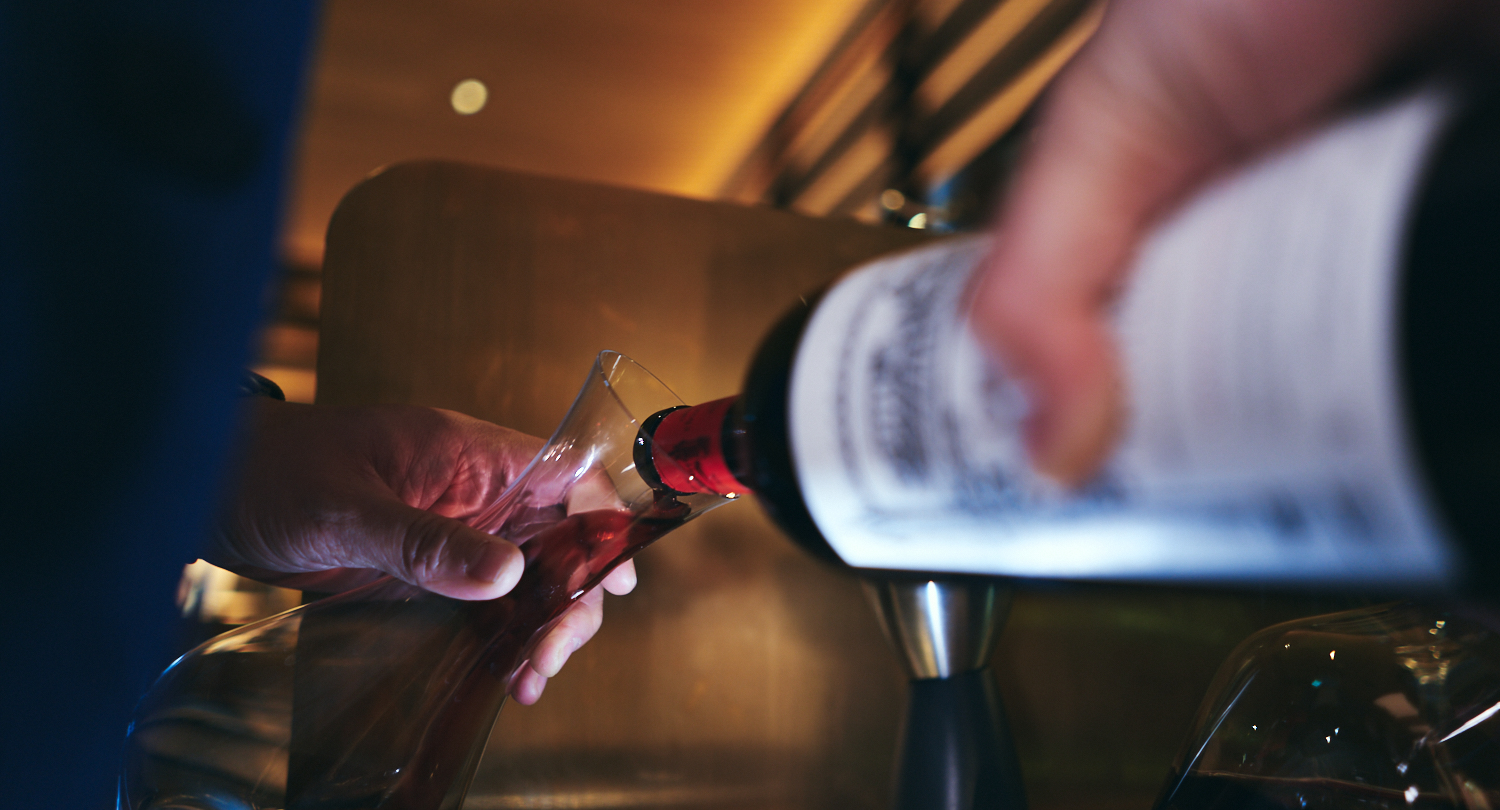
Here, the aim was two show two challenging vintages in Pomerol where L’Elgise-Clinet shined. The 2006 vintage was a year that saw a large amount of rain fall in a two-week period in September, so as a result vignerons had to worry about rot and dilution in their wines. The Cabernet Franc had more trouble ripening than the Merlot. It’s said that the key to a good 2006 was terroir. Indeed, Denis always said that the terroir is what makes L’Eglise-Clinet special. The vineyard contains deep clay and gravel soils, natural slopes and a century old drainage network that helps protect against excess water in the vineyard. And L’Eglise-Clinet has one of the largest amounts of old vines in Pomerol with Cabernet Franc vines planted in 1935 that are more than 80 years old now. So, these old vines and the terroir of L’Eglise-Clinet helped the estate in making a very fine wine even in 2006. It’s viewed by critics as one of the success stories of the vintage.
With the 2008 vintage, the challenges were cool temperatures and rain which can cause problems of mold, mildew and uneven flowering. The vintage was saved by the long hang time for the grapes. The resulting harvest was small with low yields. Pomerol was deemed as the top appellation of the vintage. For Denis, he remembered the cold temperatures during the growing season, and it was the latest date he ever harvested his grapes. He liked his 2008 for its complexity, flowery scents and freshness; it’s one of the most approachable vintages.1
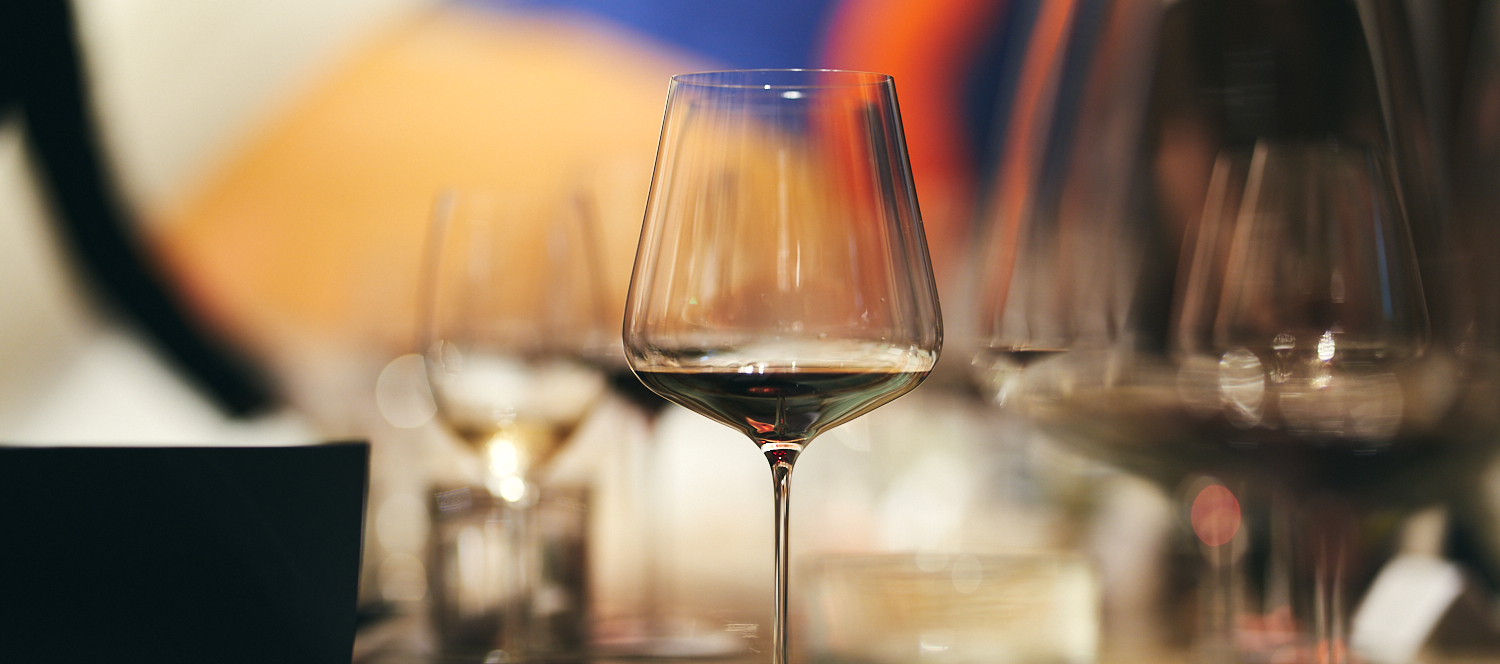
To understand how L’Eglise-Clinet performs well even in the challenging years, it’s helpful to know about Denis’ practices in the vineyard and cellar. In terms of the vineyard practices, Denis was hands on. For harvesting, he explained to Neal Martin that he harvested forty days after véraison. However, Denis described that, in addition to analysis, tasting was key to the decision. More specifically, he looked for ‘rounded, not dry, berries’.2 He practiced green harvesting and sorted mainly in the vineyard; however, by 2004 he had installed a sorting table in the winery. For the winemaking, vinification was done parcel by parcel in small temperature-controlled stainless steel vats. He used selective yeasts since 2000 ‘to be sure that no sugar will remain in the wine and to achieve a lower level of volatile acidity.’3 After the malolactic fermentation was completed in the stainless steel vats, the wine would age in French oak barrels, with 50-80% being new, for 15 to 17 months. There was no pigeage because Denis felt it was too harsh on the wine, so he just did pumping over. And the wine was fined rather than filtered because Denis felt it was the best way to reduce the yeast population. He also used a high level of sulphur during ageing.3 The terroir as well, as the thoughtful winemaking decisions of Denis Durantou, helped L’Eglise-Clinet prove to be a success over the years even in the challenging vintages, so this flight offered us the opportunity to taste and to experience this point.
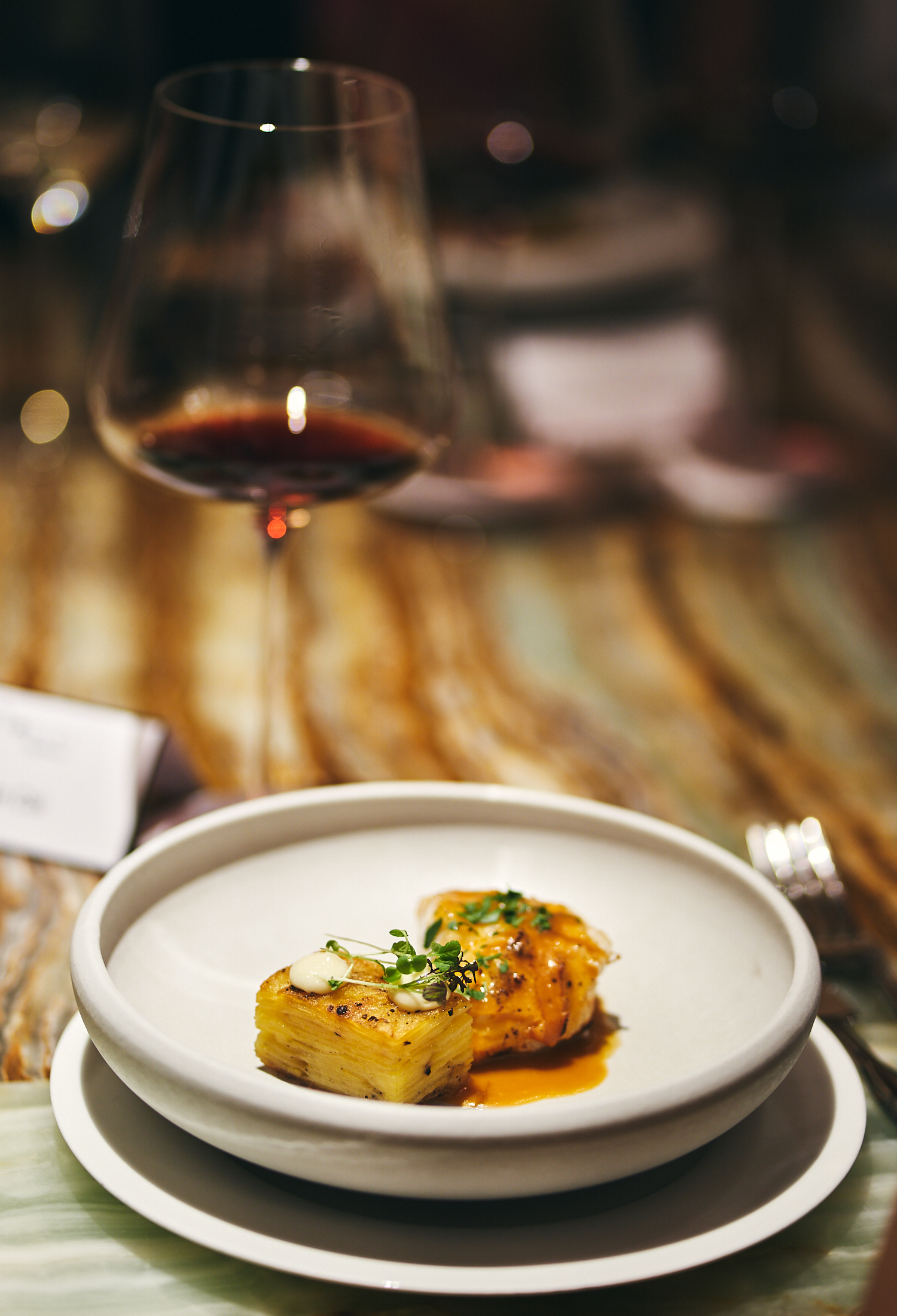
2006 Château L’Eglise-Clinet
Intense aromas of liquorice, dark berries including blackberries and dark raspberries combined with blueberry fruit showed in this wine with firm tannins on the palate and a powerful concentration that delivered a lasting finish. It received one vote from someone who said Merlot is her favourite grape. She liked this wine very much because she said it showcased all the best attributes of Merlot. And, she also commented that if you look at the price in comparison to the 2005, this wine is a real bargain as the high quality is still there.
1 vote for wine of the night.
2008 Château L’Eglise-Clinet
The 2008 was perfumed with notes of violets, red berries including cranberries, red and dark cherries, savoury spices and a hint of white pepper. The tannins were present but integrated, so it wasn’t as powerful and as intense as the 2006. This 2008 was fresh and lively on the palate and proved to be a pleasing match with the Hokkaido scallop with bone marrow and Bordelaise sauce. The lively, fresh aromas of the wine highlighted the natural sweetness of the scallop. Most at the dinner were struck by the fact that there wasn’t a strong seafood flavour to the scallop that they thought could have been off putting with the wine. Instead, the flavours of the bone marrow and Bordelaise sauce combined with the scallop’s own natural juices to complement the wine.
No votes for wine of the night.
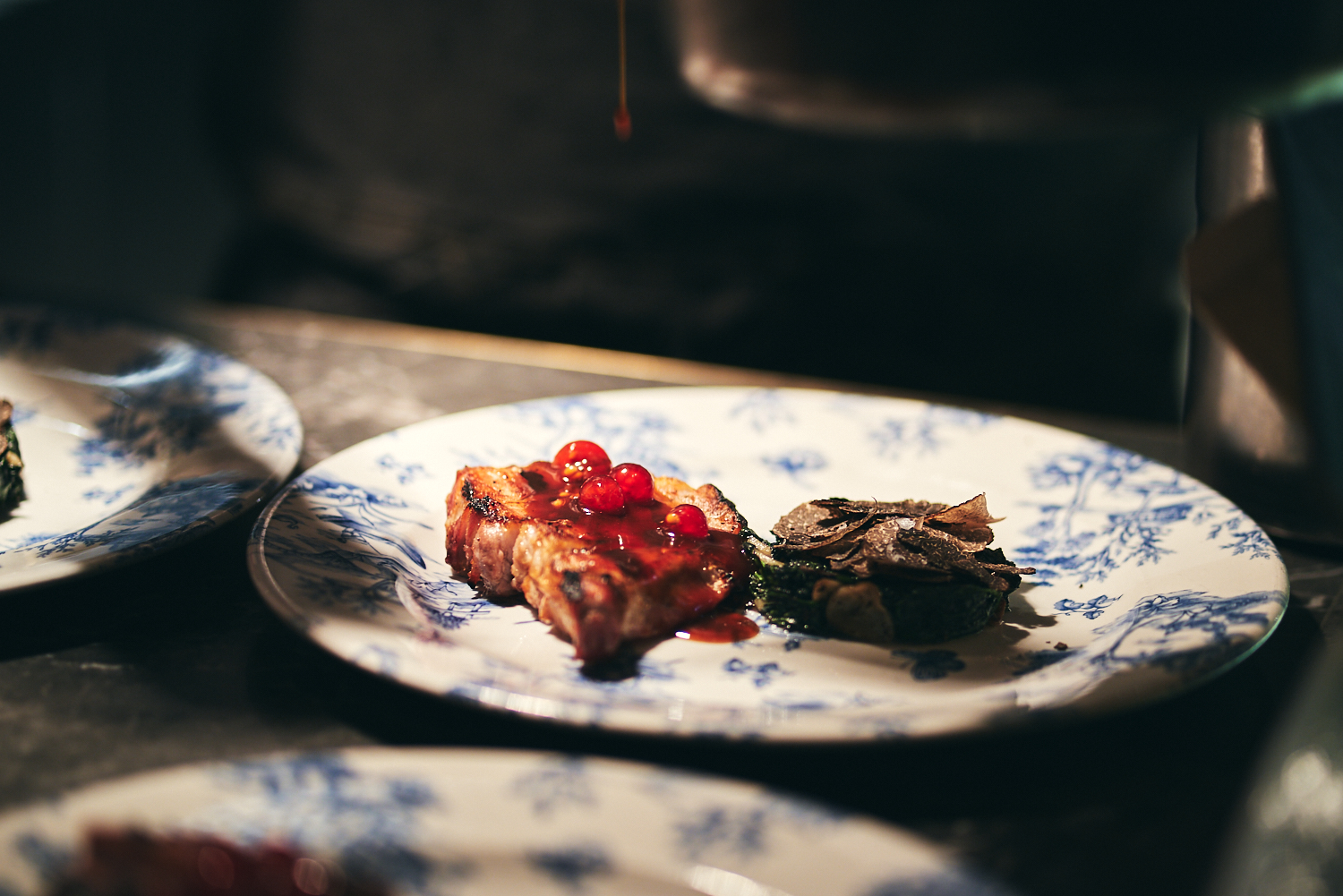
This flight offered the opportunity for tasting and discussion of three of L’Eglise-Clinet’s best vintages including the heralded 2005 where Robert Parker awarded the wine 100 points.
2000 Château L’Eglise-Clinet
Notes of dark cherries and cassis revealed themselves in this glass along with earthy minerality. It’s a structured wine where you feel the tannins on the palate, but they aren’t harsh or jarring but provide support to the fruit and deliver a long finish. This 2000 was the best pairing for the Racan pigeon cooked in black tea with toasted black pepper and served with blackberry gelatine, paté, and Merchant du Vin and piparras sauce. The more integrated flavours of the 2000 caressed the stronger aromas and notes of the dish with the structured tannins providing a counterbalance to the rich character and gamey notes of the pigeon.
5 votes for wine of the night (including 1 of mine). 2nd= place.
2005 Château L’Eglise-Clinet The 2005 delivered aromas of sweet baking spices, exotic spices and liquorice combined with dark cherry, dark raspberry and cassis; it’s a very structured wine with intense aromatics as well as power and concentration. While drinking now, the 2005 feels like it will last at least another twenty years.
2 votes for wine of the night.
2010 Château L’Eglise-Clinet
Intensely aromatic with flavours of blackberry and blueberry intermingled with vanilla are the notes I found in the 2010. The flavours were rich and ripe with a glycerin quality in the wine. The tannins were present and firm, and the wine was quite youthful in character. It will likely benefit from another ten years of ageing. In an interview in 2011, Denis remarked that his 2010 was unique because it has more tannin structure than 2009 and 2000 but more freshness than 2005. He was very proud of his 2010.1 Indeed, while we want this wine with more time in the cellar, we all agreed that it is very well made and will deliver more in the future.
No votes for wine of the night
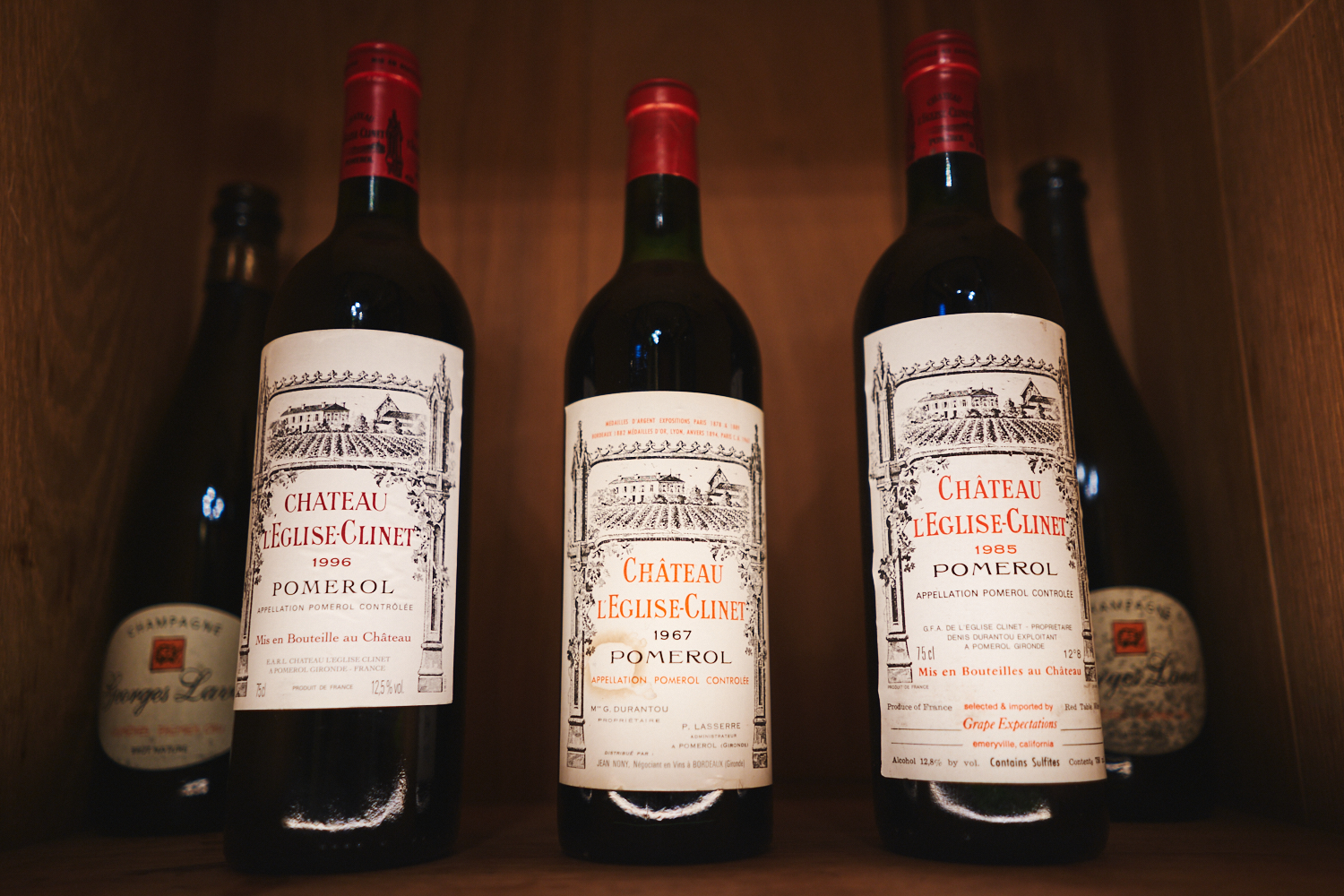
Thank you to everyone who joined me last Thursday night for this wine dinner and exploration of the wines of L’Eglise-Clinet. And my gratitude to Chef Ferran and his team at La Rambla for the thoughtfully prepared dishes to match the wines. For me, the wines revealed many of the tenets and practices that Denis Durantou followed. As I prepared for this dinner, I learned how much Denis enjoyed food and cooking too, so I’m happy we experienced these wines over dinner. One of my favourite quotes from him is: ‘I think to make good wine you have to be a good cook.’5 These are indeed food wines, and what we saw throughout the dinner was in most of the flights the ‘weaker’ vintages shined with the food and proved to be the best match. The point here is that if you are looking for good food pairing options consider the 1967, 2004 and 2008. For wines to enjoy all on their own, go for the 1998, 2005 and 2006. And for a wine that delivers both a great match for food and delicious all on its own, pick up the 2000. I hope this review inspires you to try the wines of Château L’Eglise-Clinet; they are indeed a little known treasure coming from a small estate in Pomerol.
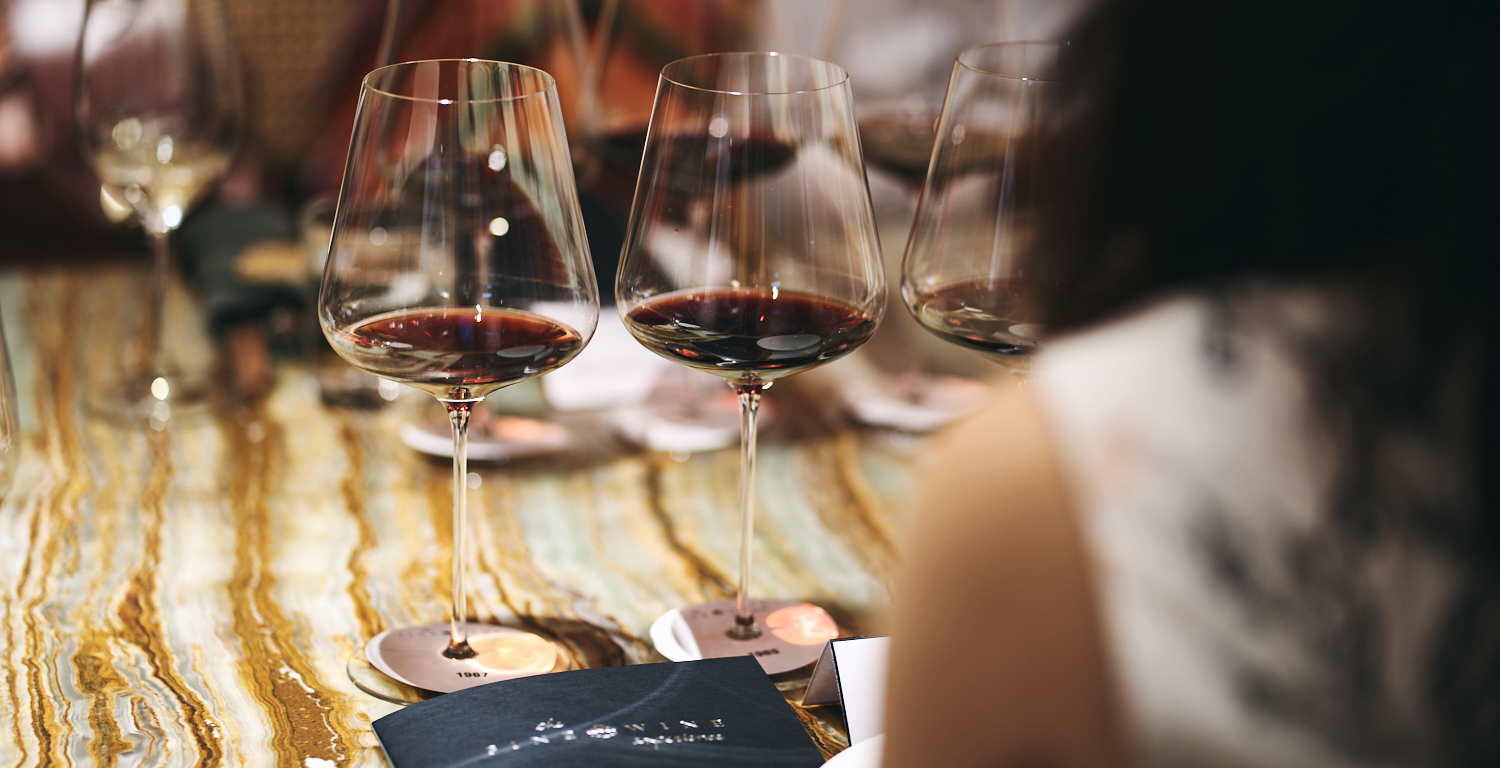
1 Piero Sini Youtube interview on 19 August 2011.
2 Neal Martin. (2012), Pomerol, p.212.
3 Neal Martin. (2012), Pomerol, p.213.
4 Neal Martin. (2012), Pomerol, p.216.
5 Neal Martin. (2012), Pomerol, p.210.
